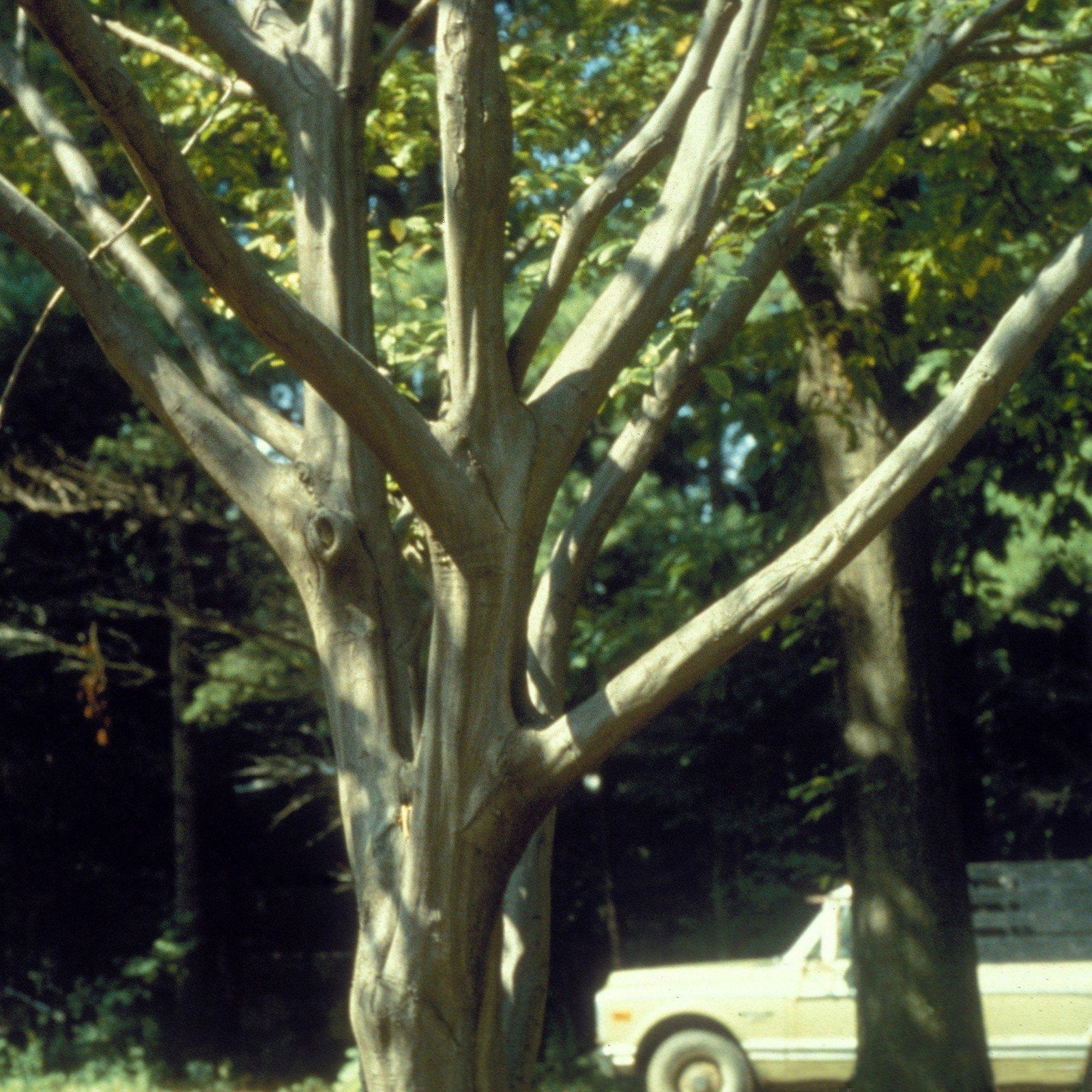The American Hornbeam, also known as Carpinus caroliniana, is a native tree species in North America.
The American Hornbeam is a small to medium-sized tree that typically reaches heights of 20 to 35 feet (6 to 11 meters). It has a rounded canopy and attractive, textured bark that resembles muscle tissue, giving it the nickname "musclewood." The leaves are green in the summer and turn shades of yellow, orange, and red in the fall.
This tree is known for its adaptability to various soil types and its ability to tolerate shade, making it suitable for woodland gardens or shaded areas. It prefers moist, well-drained soil and can tolerate occasional flooding.
|
Type: |
|
|
Origins: |
Eastern N. America, GA Native |
|
Height: |
20' - 35' |
|
Spread: |
20' - 35' |
|
Spacing: |
25’ |
|
USDA Hardiness Zone: |
3 - 9 |
|
Culture: |
|
|
Bloom Color: |
White (male), Green (female) |
|
Season of Interest: |
MAINTENANCE NEEDS: Low maintenance plant. Leaf spots, cankers and twig blight are occasional disease problems.
LANDSCAPE USES: Specimen planting or Grove, Wetlands and ponds, Woodland Garden, Naturalized Areas, Native Garden, Screening, and Shade Tree.
COMPANION PLANTS: Serviceberry, Elderberry, Viburnum
IMAGES: Richard Webb, Bugwood.org, USA, Carpinus caroliniana trunk, CC BY 3.0 US, (2) Mohamed Rezk, A15-2-Carpinus caroliniana (American Hornbeam), CC BY-SA 3.0, (3) Mohamed Rezk, A15-1-Carpinus caroliniana (American Hornbeam), CC BY-SA 3.0, (4) Photo by Toni Genberg, American hornbeam (Carpinus caroliniana)
*As plants have ranges in appearance they may not appear as the images shown.





























































